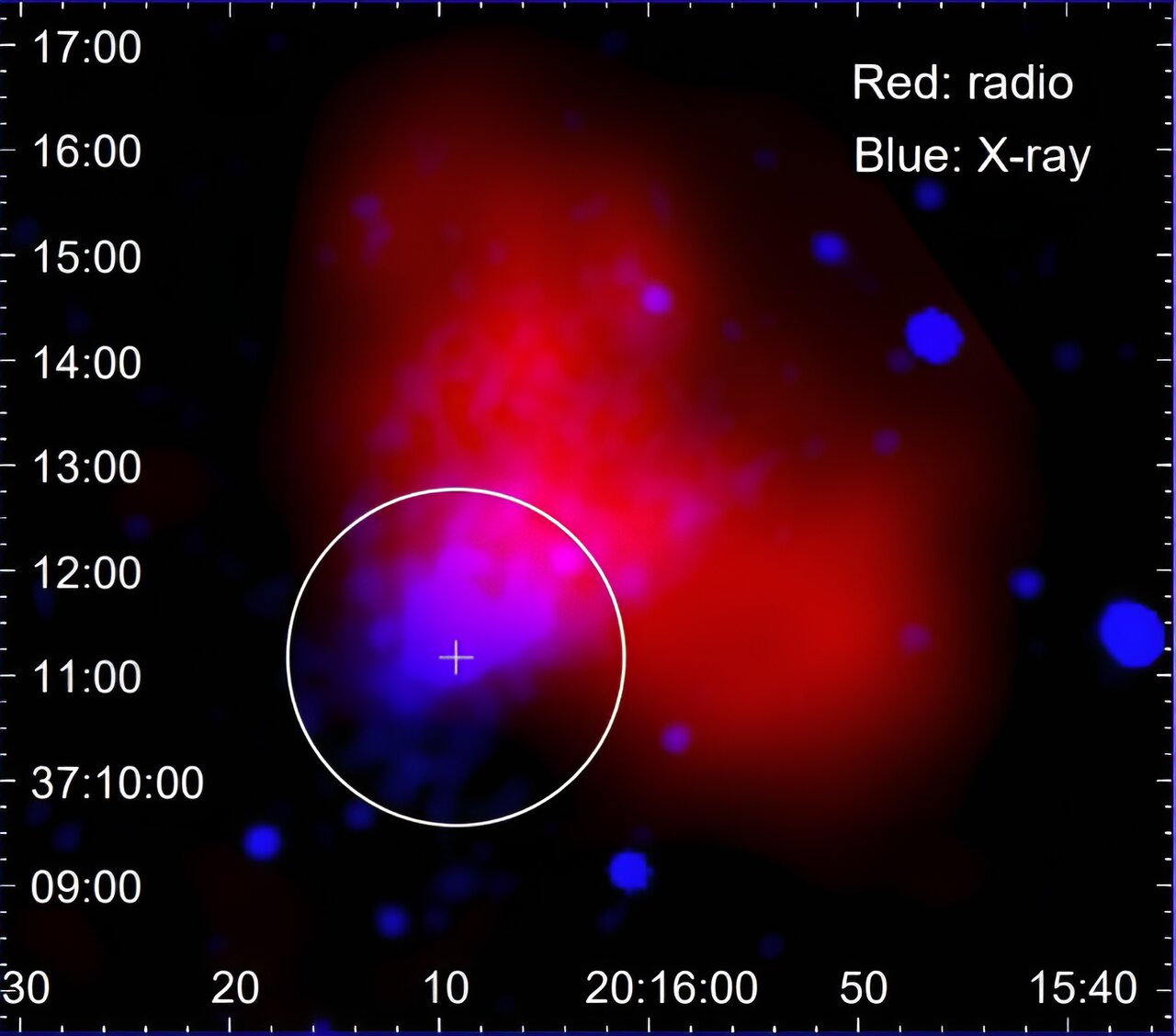Astronomers from Nanjing University in China, along with researchers from various institutions, have made a significant discovery using the Five-hundred-meter Aperture Spherical radio Telescope (FAST). They have detected a radio pulsar within the supernova remnant known as CTB 87. Their findings were recently reported in a paper published on February 1 on the arXiv pre-print server.
Pulsars, which are highly magnetized rotating neutron stars, emit beams of electromagnetic radiation. While typically detected through short bursts of radio emission, they can also be observed using optical, X-ray, and gamma-ray telescopes.
CTB 87 is a plerionic supernova remnant (SNR) with an X-ray luminosity nearly 100 times weaker than that of the Crab Nebula in the 0.15−3 keV band. It contains a pulsar wind nebula (PWN) with a trailing morphology in X-rays. However, despite PWNe being powered by a pulsar’s wind, none had been found within this SNR until now.
Led by Qian-Cheng Liu of Nanjing University, a team of astronomers investigated a point-like X-ray source within CTB 87, designated as CXOU J201609.2+371110. Their study revealed the detection of radio pulses from this source using FAST.
“We report our discovery of the radio pulsar, PSR J2016+3711, within the supernova remnant CTB 87, with a ∼10.8σ significance of pulses, confirming the compact nature of the X-ray point source in CTB 87,” wrote the researchers.
According to their findings, PSR J2016+3711 is located approximately 43,400 light-years away, with a spin period of 50.8 milliseconds and a dispersion measure of approximately 428 pc/cm³. The pulsar’s spin-down luminosity was measured to be 22 undecillion erg/s, with an estimated characteristic age of 11,100 years. PSR J2016+3711 is thus the first pulsar within an SNR detected using FAST.
The equatorial surface dipole magnetic field strength of PSR J2016+3711 was determined to be approximately 1.9 TG. The researchers noted that the radio pulse profile of this pulsar is narrow, lacking broad wings, indicating either an intrinsically narrow radio beam starting near the magnetic polar cap or a line of sight sweeping across a small segment of a broad beam.
Since many pulsars also emit gamma-rays, Liu’s team analyzed data from NASA’s Fermi spacecraft to search for possible gamma-ray pulsations from PSR J2016+3711. However, no gamma-ray pulsations were detected from this source. The researchers emphasized the need for further observations to definitively determine whether PSR J2016+3711 emits gamma-rays.
“Continued radio observations spanning several years would be beneficial to obtain a more accurate timing solution, enabling the folding of gamma-ray data to search for pulsations,” concluded the study’s authors.
More information: Qian-Cheng Liu et al, Discovery and timing of pulsar J2016+3711 in supernova remnant CTB 87 with FAST, arXiv (2024). DOI: 10.48550/arxiv.2402.00578





